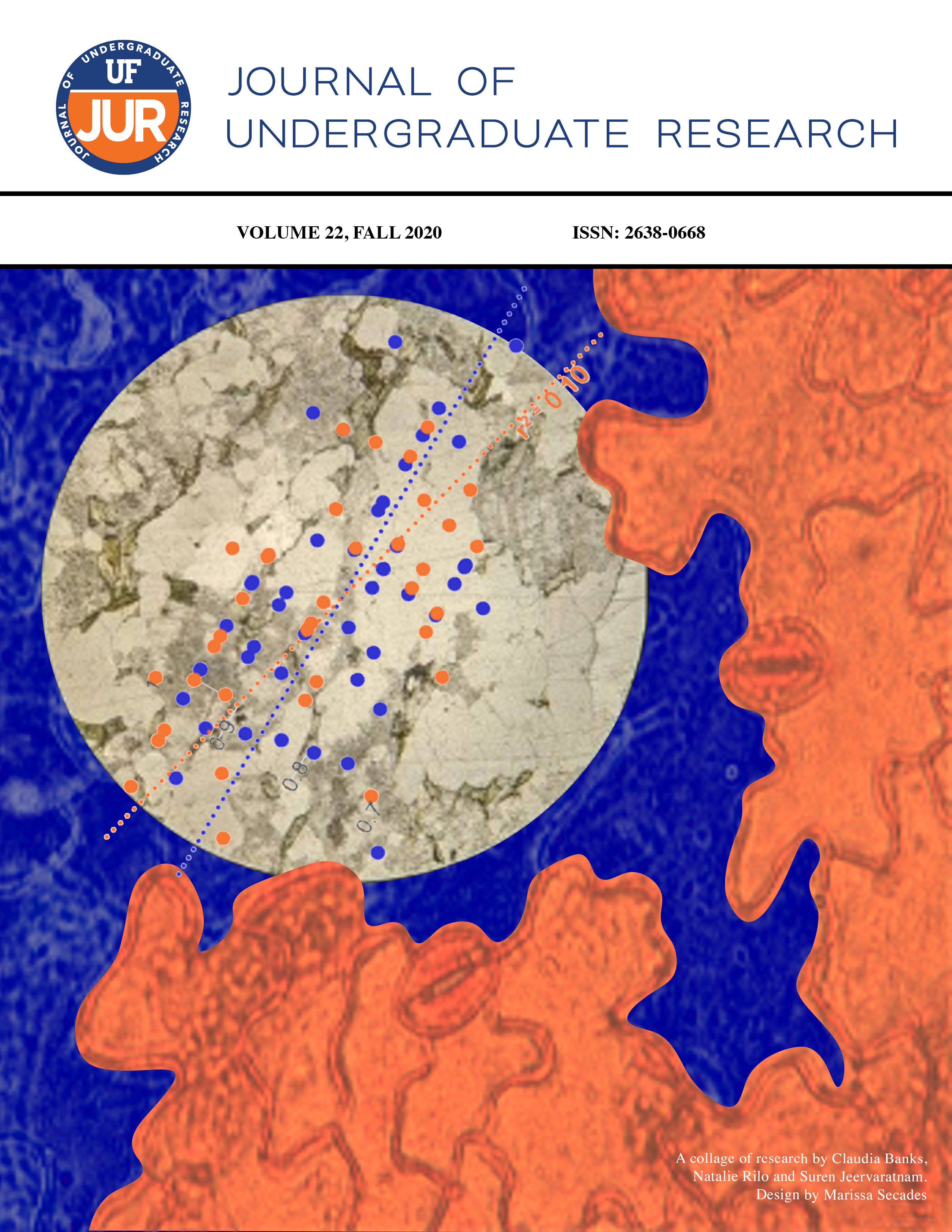Magmatic and Tectonic Setting of Archean Granitoids in the Southeastern Singhbhum Craton, India: Developing constraints with major and trace element geochemistry and geochronology
DOI:
https://doi.org/10.32473/ufjur.v22i0.120598Keywords:
granite, Singhbhum craton, Geochemistry, U-Pb system, zircon datingAbstract
The Singhbhum craton is one of five Archean nuclei comprising Peninsular India. It is a composite Archean block that includes the Older Metamorphic Group, the Older Metamorphic Tonalite Gneisses, the Singhbhum Granite, and the Iron Ore Group as its major units. The ages of these components range from ~3.5 to ~3.1 Ga, although overlapping ages and similar rock types confound their genetic relationships. Plutonic felsic rocks from the southeastern Singhbhum craton (BK1: a foliated tonalite, KP1: a non-foliated granite, and SG14: a non-foliated granite) yield U-Pb (zircon) ages of 3321 ± 2 Ma (BK1), 3301 ± 1 Ma (KP1), and 3261 ± 1 Ma (SG14) that coincide with a pulse of Singhbhum Granite emplacement at 3.27 to 3.33 Ga. REE patterns and tectonic discrimination diagrams based on major and trace element ratios suggest a subduction zone setting for these rocks. We report major and trace element data for and compare them to previous works in order to characterize the Archean felsic plutonic history of the craton.
Metrics
Downloads
Published
Issue
Section
License
Some journals stipulate that submitted articles cannot be under consideration for publication or published in another journal. The student-author and mentor have the option of determining which journal the paper will be submitted to first. UF JUR accepts papers that have been published in other journals or might be published in the future. It is the responsibility of the student-author and mentor to determine whether another journal will accept a paper that has been published in UF JUR.

